Gayway Park is located in Beulah, Colorado, a beautiful natural valley at the edge of the of the Colorado Rockies, 20 miles southwest of Pueblo. The Denver Post once called it “The most beautiful valley in Colorado,” and we agree.
In the late 1800s it had been known as "Mace’s Hole,” after an outlaw who’d lived there. Beulah is probably best known for its rare rose marble which was quarried there for the interior of Colorado’s State Capital building. In the 1930s, in what at one time had been Lake Tucita, was built a large restaurant/dance hall with lots of surrounding land, right in the middle of Beulah. It’s a small mountain town of about 900 families, that doubles in population during the summer. Here was Gayway Park, our home and Dad’s base of operations for almost a decade.
An eye witness account in a 1956 Colorado Rancher & Farmer article during which the reporter attended the Gayway Jamboree:
“Buddy who emcees the affair, appears ridiculous in trousers three times larger than needed, loud plaid shirt, and a diminutive derby hat. . . . It opens the evening with a big laugh which serves to place everyone in a relaxed and carefree mood. . . . The informal program gets off to a rousing start when Buddy Johnson runs down the aisle from the rear of the main room, jumps upon the low platform and gives a wild yell. Immediately both bands ring out with a theme song.”
“The response is thundering applause, stomping of feet and whistles. . . . Occasionally, words fail a novice when confronted with a microphone and an audience of 500 persons. . . . When stage fright strikes, Buddy sings along with the performer, lending morale. Frequently a newcomer is asked to sit in with the band and becomes a regular member, although Buddy wonders audibly, “Why do I do this? Already got more noise-makers than I can feed!”
“Participants have ranged in age from five to 93 years. The oldest man to appear on the free-for-all program traveled over a hundred miles to play his fiddle. . . . Some appear on radio and television in the surrounding area, following a debut at Gayway Jamboree. Some never reach for the stars, satisfied in having a local outlet for the songs in their heart."
“Looking backward over 15 years of such activity, and considering that performers on one evening of the jamboree number around 40, it is easily understood how widespread is Buddy Johnson’s influence. Perhaps the secret of his interest and ease with youngsters is the fact he is a family man. . . . Buddy’s own children, two daughters, 15 and 10 years, and a four year old son, are regular in attendance at Gayway Jamboree.”
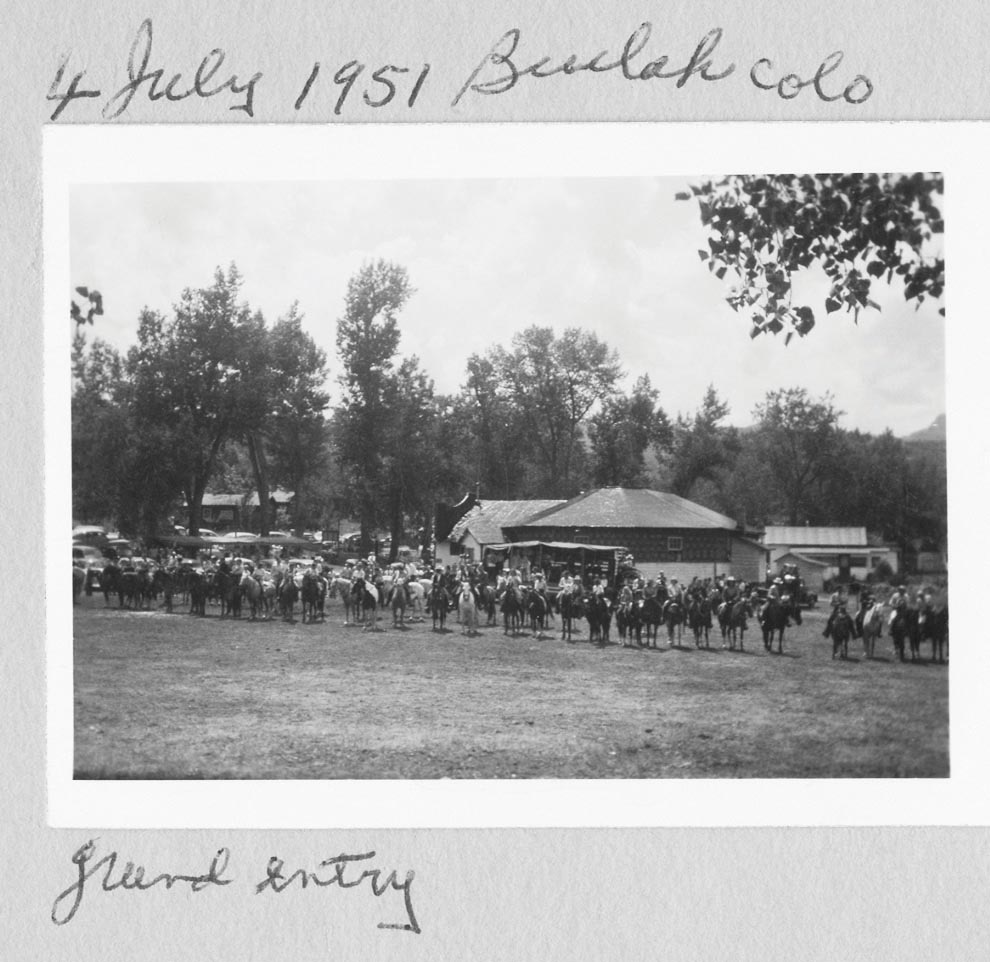
Gayway Park, a few years before Buddy bought it in 1953. The main structure was an interesting octagonal building. The large cottonwood trees in the background grew atop an earthen berm which surrounded the entire five acre property of what once had been the edges of the Lake Tucita.
Regardless of the season, Buddy was a promoter and always kept Gayway busy. This is a Christmas time photograph from 1954 in which he was promoting the jamboree on the day after Christmas. To celebrate the season, he even put a Christmas tree on the roof!
There were always lots of horses at Gayway, but Buddy also invited motorcycle and old car rallies to meet. His mind was always working promoting the next event.
This is a rare color photograph which shows one of the early versions of the band. Many musicians played with Buddy and The Rangers for years. Left to right, Russ Hayes steel guitar (21 years), Duke Farrin fiddle (21 years), Buddy on drums, Dan Knezevich guitar (six years), and Red Fanning piano (15 years). From 1945 to 1986 Buddy employed dozens of fine musicians and brought many people together for the Jamboree. Red’s son Paul, who many years later would play with the Rangers, too, remembers singing two songs at the Jamboree when he was only five. The band played Gayway countless times.
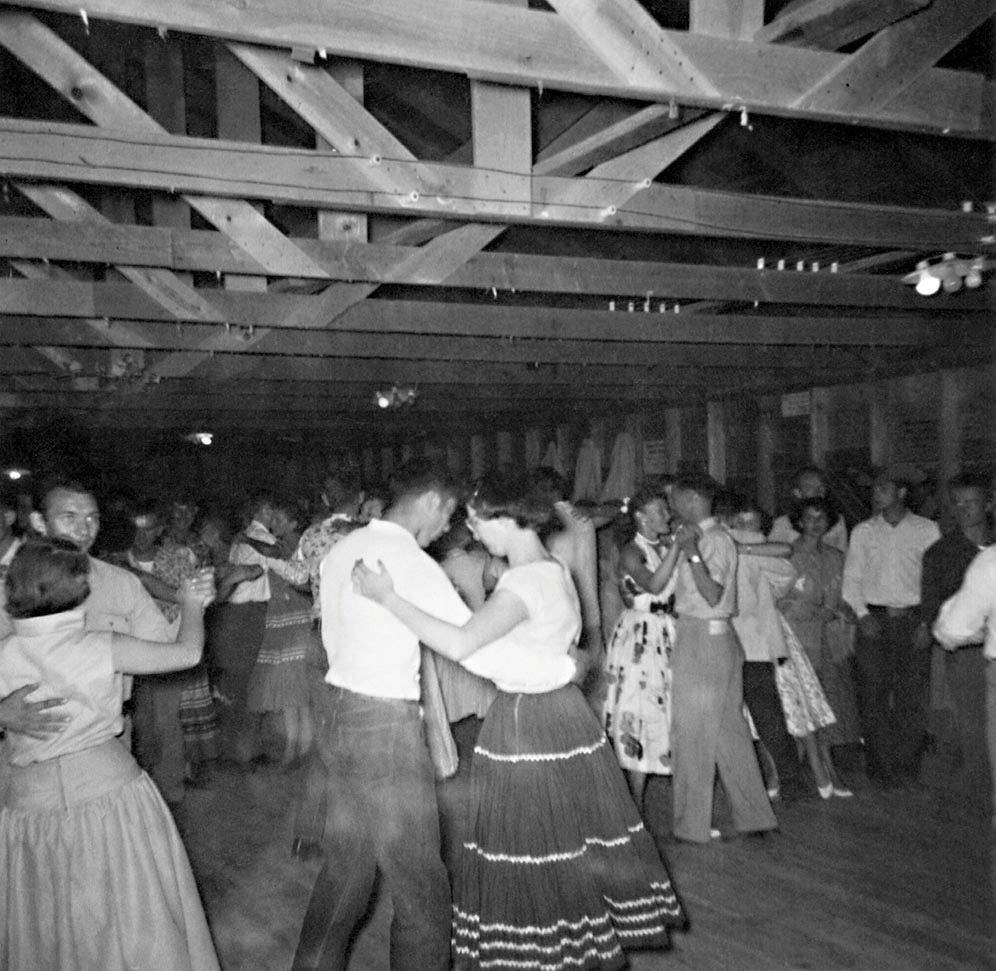
A typical 1950s Saturday night dance crowd. Gayway was Buddy Johnson and the Colorado Rangers’ home and they performed there often. When Buddy was playing elsewhere around the region, other bands, often run by friends like Jim Lacy and the "Melody Rangers," Milo Youngman and “The Vagabonds,” or "Arkie" of the "Greenhorn Valley Boys" kept things jumping.
Gayway was a destination which Buddy advertised on his numerous shows.

Lots of events were held at Gayway during these years, dances, large parties and celebrations of all types, but Buddy’s Sunday Gayway Jamborees stood out. It was similar to today’s open mike sessions, but with many of the performers true professionals. Lots of people performed during the years Dad held the Jamboree including some who went on to wider success. This sign was attached to the side of the Ranger’s band trailer which went everywhere they went. Buddy advertised Gayway, Beulah and each of its events in all his venues: TV, radio, at dances elsewhere, and in personal appearances. He loved the valley and its people and liked spreading the word as widely as possible.
The Sunday Gayway Jamboree hosted a wide variety of performers and bands of all types. Here Buddy acts as master of ceremonies, a role he frequently performed. Gayway’s decorations changed with the seasons' events, everything from Valentine’s Day dances to Halloween parties and Christmas balls.
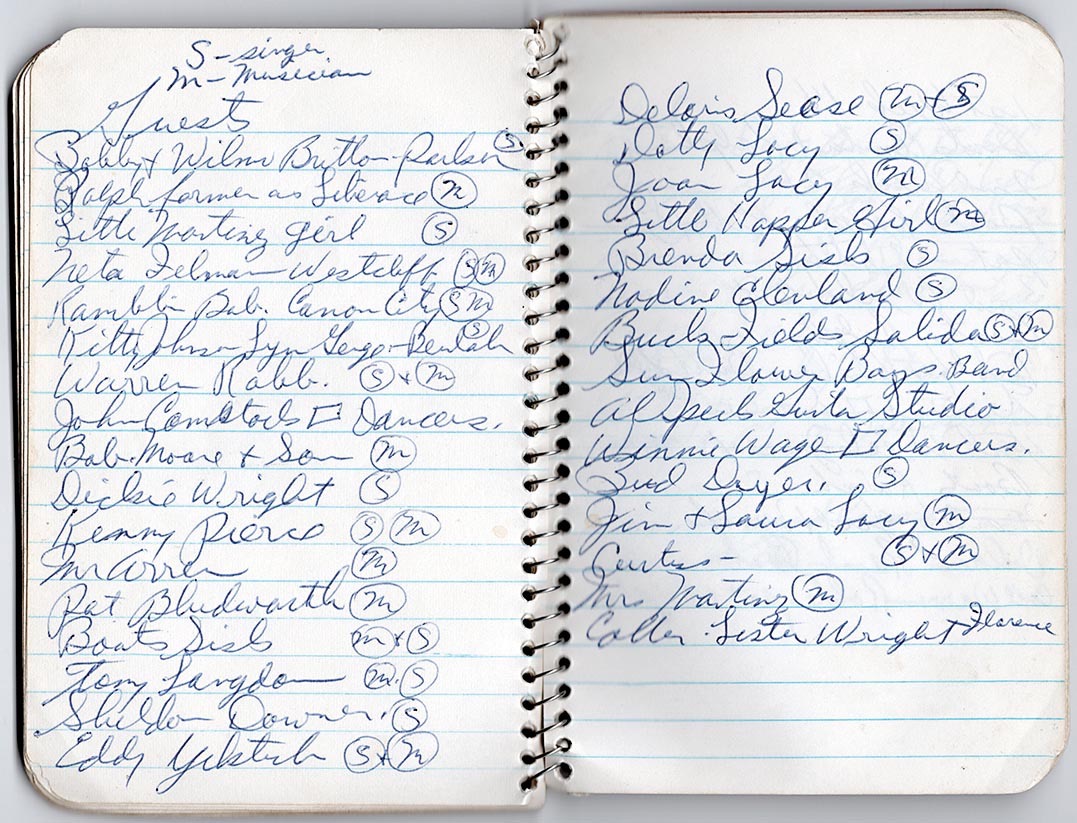
This is a list of performers for an evening’s performance at Gayway. He broke the acts down into S (singers) and M (musicians) trying to achieve a balance between the acts. Interestingly, this appears to be a Jamboree list for the Valentine’s Day show which is seen in the photograph below. Notice on line six on the left-hand page it lists "Kitty Johnson Lynn Genge -Beulah."
Kitty and friend Lyn Genge sing for a 1954 Valentine’s Day crowd. The Rangers were backing them up; Roy Leatherman can be seen at left. The band is playing without Buddy, who can be seen on the right side, with the banjo slung behind him.
Dad was “a live wire,” always funny and inventive, anything to entertain. Artist and friend Al J. Boggs of Beulah drew this of Buddy entertaining at the Gayway Jamboree. Al, a very handsome elderly gentleman, was to later play the role of General James Wilkinson in my Zebulon Pike and the Blue Mountain (1984) film. The original is in the Beulah Historical Society Museum, Beulah, Colorado.

In 1955, Sheldon Downer, a local singer, performs with one of the many bands that played Gayway. This time it is Arkie and the Greenhorn Valley Boys.
All the walls of the original Gayway building were decorated with Western items, old antique guns and livestock tack.
Here’s a rare 1950s color photograph of one of the many Sunday Jamborees. Buddy is dressed as a clown which always got the crowd laughing and enjoying themselves. The young lady singing is unknown. In the background are longtime Colorado Rangers Roy Leatherman on guitar and Duke Farrin who usually played fiddle, shown here taking the drums.
The Sunday Jamboree at Gayway. Here Buddy entertains with Jim Ed Brown. Jim Ed was stationed at Camp Carson at the time. He would later become famous performing with his sisters. A number of Western stars performed on or got started on the Gayway Jamboree.
Beulah resident and jamboree regular Mr. Porter clowns around with Dad (who didn’t play the guitar) while Jimmy Lacy (a long time friend) and his band The Melody Rangers look on laughing. Dad was what he called “a live wire” always funny and inventive, anything to entertain.
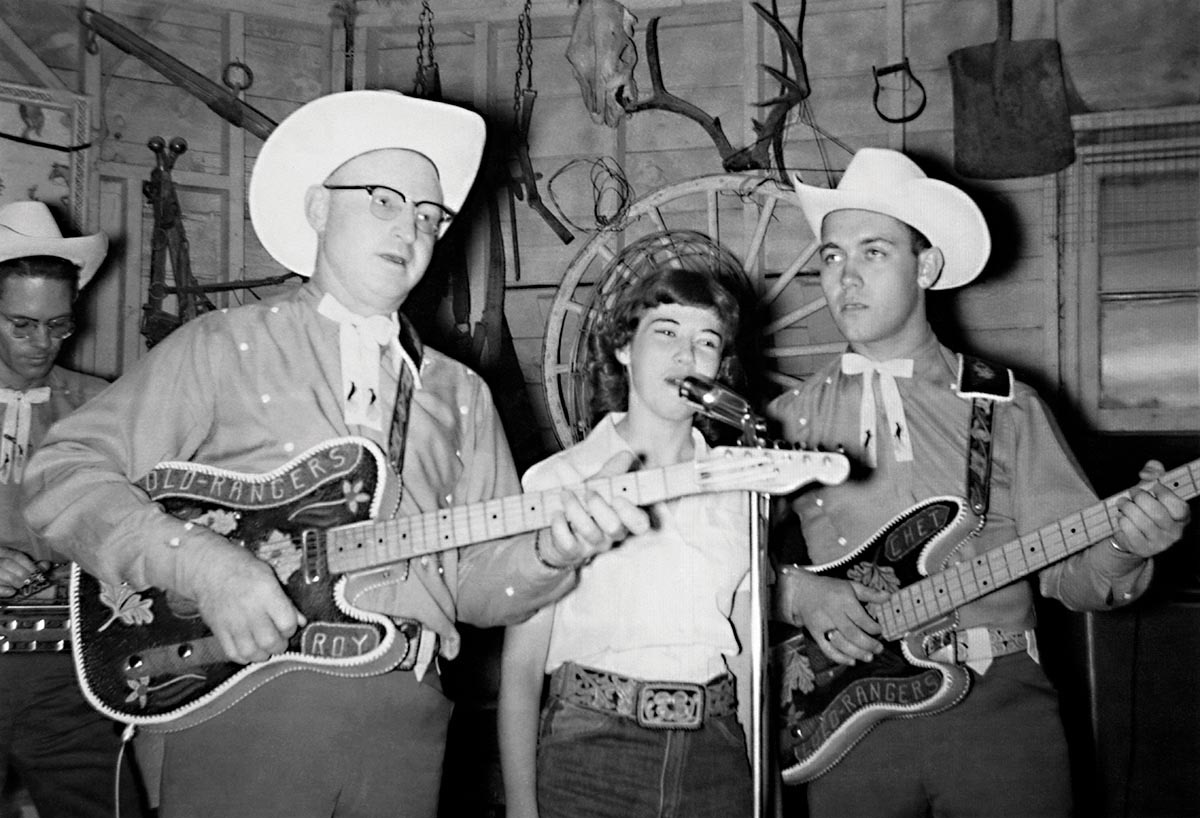
The Rangers join in for harmony with Maureen McKenna. Left background is Russ Hayes, Roy Leatherman, Maureen McKenna, and Chet Lee Calcote. Notice the guitars both have Colorado Rangers leather covers. Maureen was Roy’s niece. Chet and Maureen later married and they now live in Texas.

Buddy clowns with Arkie, leader of the Greenhorn Valley Boys. As the Colorado Rancher article mentions, all the performers would “undergo some jovial ribbing from the master of ceremonies as he adjusts microphones, enquires name and address of the performer. By the time the amateur talent is free to begin his performance he is usually at ease and enjoying the laughs Buddy has created.”
Buddy and some of The Rangers in the background as other performers crowd the stage. Everyone wanted to perform on the Jamboree.
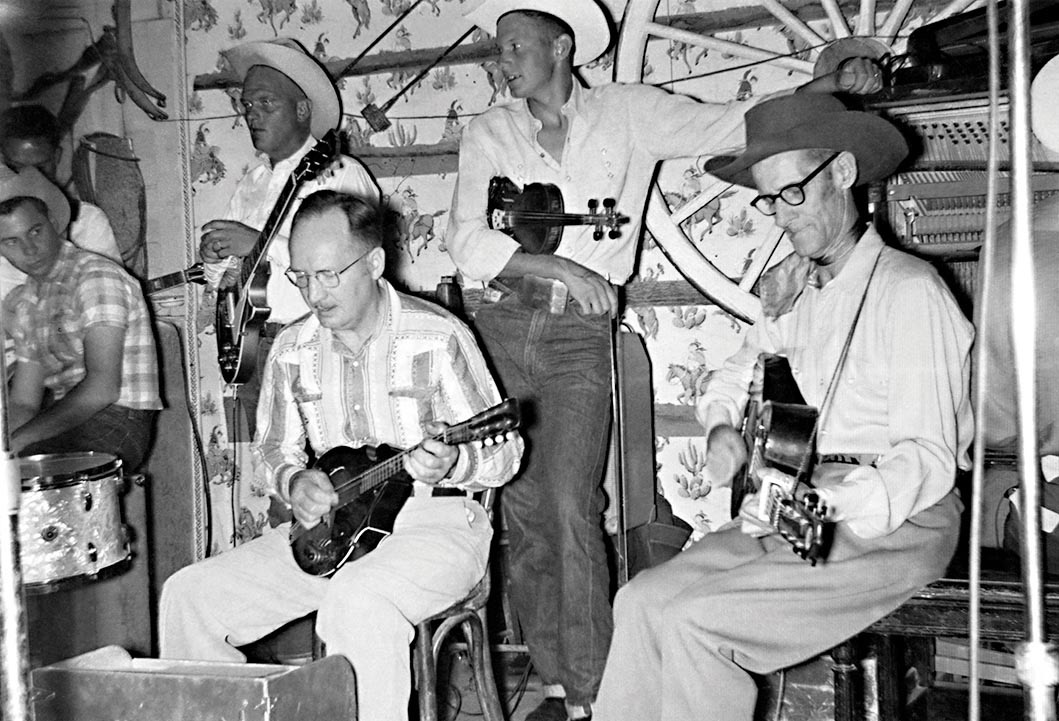
Two long-time Beulah residents and Gayway Jamboree regulars, left to right, Mr. Arend and Mr. Porter. Others wait their turns, like LeRoy Meyers standing with fiddle. Arend and Porter, like many others, were both frequent performers on the Sunday Gayway Jamboree shows.
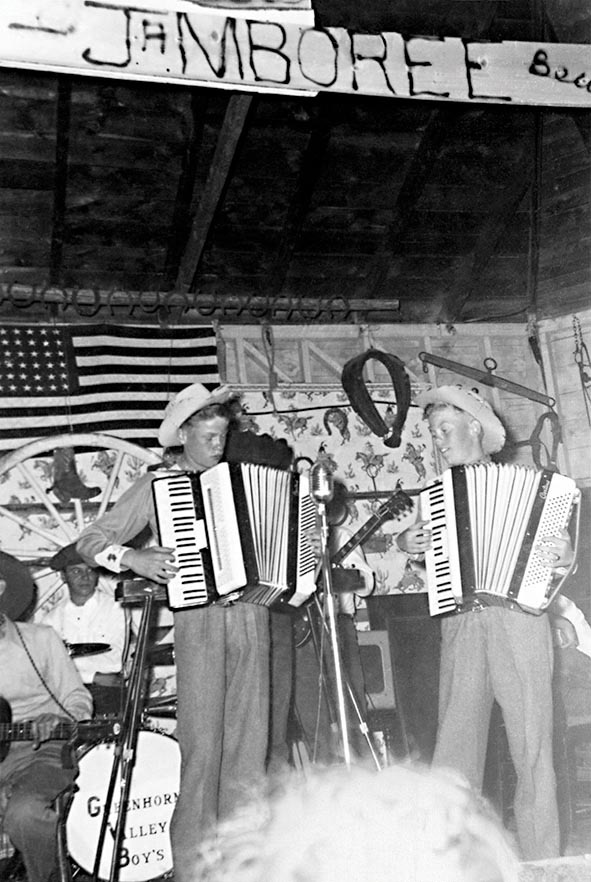
These two boys are the Cornelison brothers, Delvin on the left and Dorvin on the right. Here they play an accordion tune with the Green Horn Valley Boys band in the background.
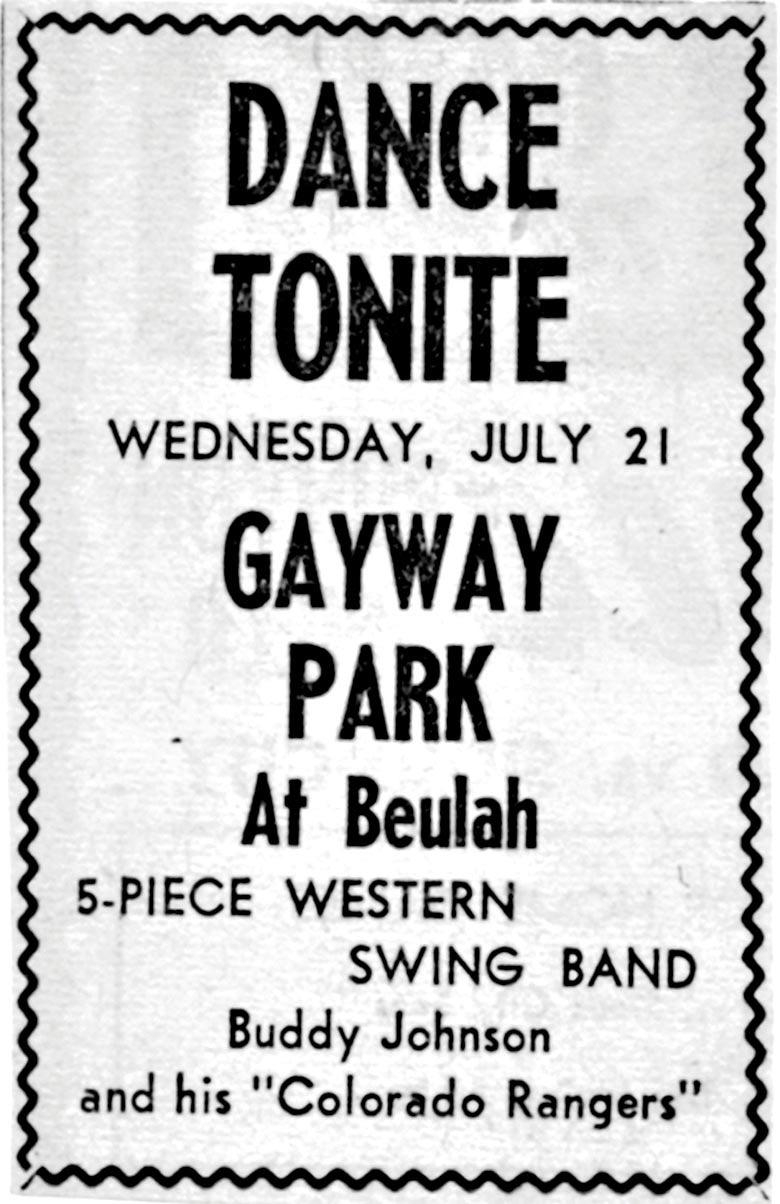
A 1954 newspaper ad, not for the Sunday Jamboree, but for a summer Wednesday night dance. Gayway was hopping even during the week.
Buddy adjusts the mike for singer Doris Lessenden while musicians wait. The hall had lots of deer and elk heads along the walls.
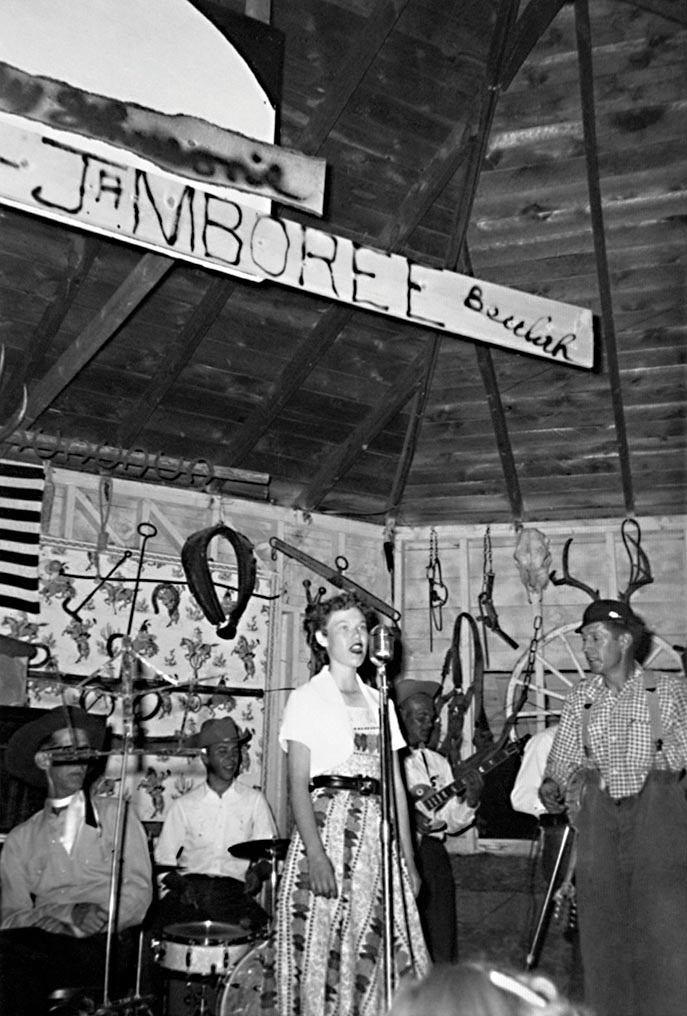
In 1955, an unknown lady sings her heart out, one of many performers in the Gayway of long ago.
The Jamboree provided many special Sunday nights. Left to right, Russ Hayes, Roy Leatherman, Buddy, Duke Farrin and probably Red Fanning off to the right side. Image courtesy the Beulah Historical Society Museum.
And a Great time was had by all!